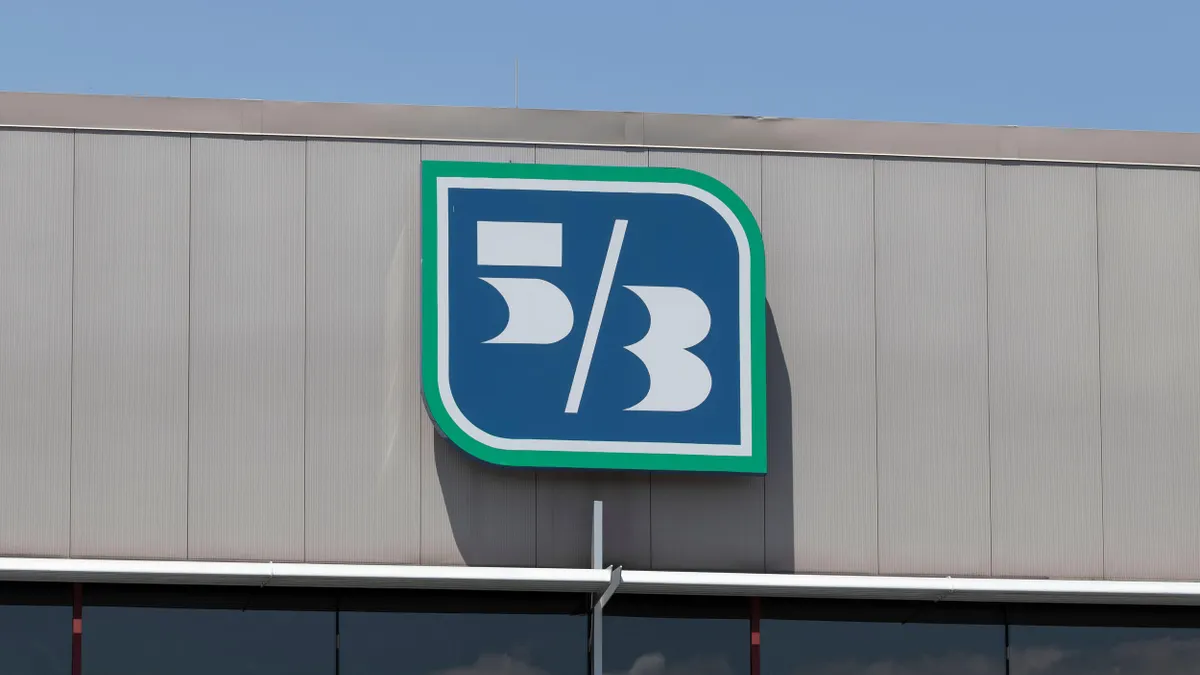Payveris, a Cromwell, Connecticut-based payment service provider for nearly 300 banks and credit unions, has launched a peer-to-peer (P2P) payments tool that it says will rival products from better known companies such as Early Warning Services (Zelle’s parent company), PayPal and Square.
In particular, Payveris is targeting financial institutions hesitant to add Zelle because of cost and competitive considerations.
The Payveris P2P capability will be embedded into client banking apps, and their consumer users will be able to send money to other bank accounts identified through email addresses and phone numbers, similar to the bank-backed Zelle P2P payments network. Payveris will fold its P2P payments tool into its Move Money service, the company’s cloud-based digital payments and money-movement platform.
Payveris is entering a crowded P2P payments market. Among the P2P payment vehicles available to U.S. consumers, bank-backed Zelle — which was launched in 2017 as a rebranding of the bank-led clearXchange P2P payments network — appears to have the broadest coverage. More than 1,000 U.S. financial institutions, including the largest banks, are on Zelle.
Customers of institutions that aren’t on Zelle can download the Zelle app and add their banking information. Taking into account institutions whose customers have uploaded their banking details to the Zelle app, Zelle reaches customers of 8,000 financial institutions, according to Early Warning Services, the bank-owned company that runs the network. A total of $106 billion was sent through the Zelle Network on 392 million transactions during the first quarter of this year.
Other popular P2P payment apps include PayPal-owned Venmo and Square’s Cash App. Venmo, which counts 70 million active accounts, processed $51 billion in total payment volume in the first quarter of 2021. Meanwhile, Square’s Cash app had more than 36 million monthly transacting active customers in the fourth quarter of 2020.
Payveris CEO Ron Bergamesca told Payments Dive that the new product offers P2P payments for institutions that aren't able to onboard Zelle because of cost, technology or competitive reasons. Zelle serves more than 1,000 U.S. financial institutions, including the largest banks, but thousands of smaller institutions haven’t added Zelle.
“Zelle is a good product, but it’s a more expensive product and there’s more overhead,” said Bergamesca. “The transaction cost and the setup cost is more expensive with Zelle.”
Payveris would not provide precise figures on the onboarding and transaction costs of its newly-launched P2P payments tool. Compared to Zelle, the upfront fee is “a fraction of the cost,” and per-transaction fees can be as much as 30% lower, according to Bergamesca.
Competitive concern
In addition to the cost factor, Zelle is run by Early Warning Services, a private company owned by a consortium of the nation’s largest banks, and those are institutions that compete with Payveris’ clients.
“If you want to participate in Zelle, you’ve got to give [them] your customer data so that they can help prevent fraud,” said Bergamesca. “It’s a heavy lift operationally, and you're giving a ton of data to the big banks.”
For some institutions, onboarding to Zelle can be difficult because “the data sits in a lot of places” and pulling it together can be an operational challenge, he noted.
Early Warning Services would not comment on Zelle’s revenue structure and costs. Sean Loosli, head of consumer and small business payments for Zelle at Early Warning Services, said Zelle, which serves more than 140 million bank customers, helps reinforce relationships consumers have with their financial institutions.
“More digitally engaged customers drive higher value for banks, in the form of increased revenue, product holdings and long-term loyalty,” Loosli said in a statement. “As we look to continue to grow our network even further, we regularly evaluate our business model and technology model based on feedback from both partner financial institutions and prospective partners.”
A 2020 Aite Group survey found that 45% of financial institutions that don’t have a P2P payments system said it was not a priority to implement Zelle, and 39% of financial institutions with some type of P2P payments system said it was not a priority to add Zelle.
Analysts agree that many smaller banks and credit unions’ primary concerns with Zelle are over cost and competition.
“[With Zelle] to a certain extent the credit unions and community banks feel like they're funding their mortal competitors,” said Ron Shevlin, a research director at Cornerstone Advisors, a research firm. “There's definitely an opportunity in the market for somebody to come in at a lower cost and good technology.”
In-house P2P
With the popularity of non-bank P2P payment tools, smaller institutions are likely to want to roll out an in-house P2P payments mechanism that keeps customers within their own product ecosystems.
“They're putting P2P payments in there because it's almost like table stakes, but it's not something that makes money,” said David True, a partner at consulting firm Paygility Advisors.
Payveris client Connect Credit Union was part of a four-week pilot of the P2P solution with a select group of institutions in May. Scott Meyer, president and CEO of Connect Credit Union, said customer demand drove the decision to add the Payveris P2P offering.
“The members have benefitted from using the real-time P2P offering in our mobile app without having to use multiple providers or log in to several apps,” he said. “We know that mobile adoption is important to stay relevant in our members’ lives as well as drive member loyalty.”
Institutions that shun Zelle, however, may be overlooking some longer-term strategic advantages, argues Shevlin.
“You’ve really got to look at the long-term Zelle play, which is not simply P2P,” Shevlin said. “[By] choosing to not go with Zelle just because they're high cost on the consumer side, you may be short-changing your longer-term prospects on the business-to-business side, and not to mention that from a feature and functionality perspective, Zelle’s got big money behind it and they're going to continue to build out a lot of capabilities.”
Despite the rivalry, even Payveris is considering offering Zelle through its platform in the future. Asked why Payveris clients would want to add its in-house P2P payments tool now instead of waiting for a possible future Zelle rollout, Bergamesca said clients who would prefer Payveris’ solution are likely attracted to its lower fees, ease of integration and the ability to brand the product as they see fit.
"Payveris is considering offering Zelle as a complement to our proprietary real-time P2P product to give our clients a choice,” said Bergamesca. “There are two fairly distinct markets for real-time P2P, which are those who want Zelle and those who are looking for an alternative.”



















